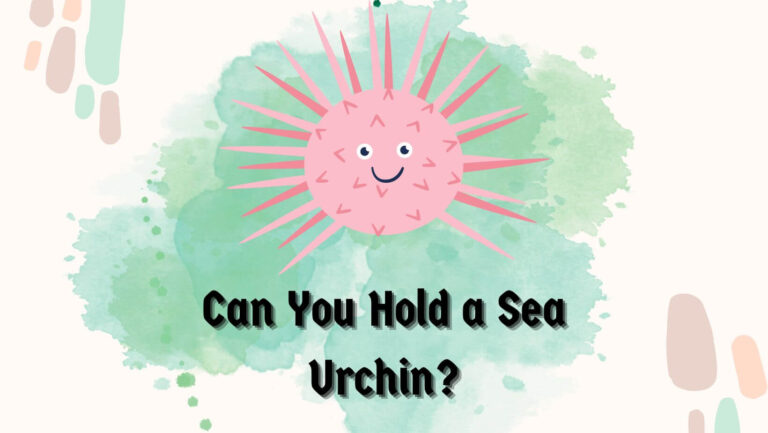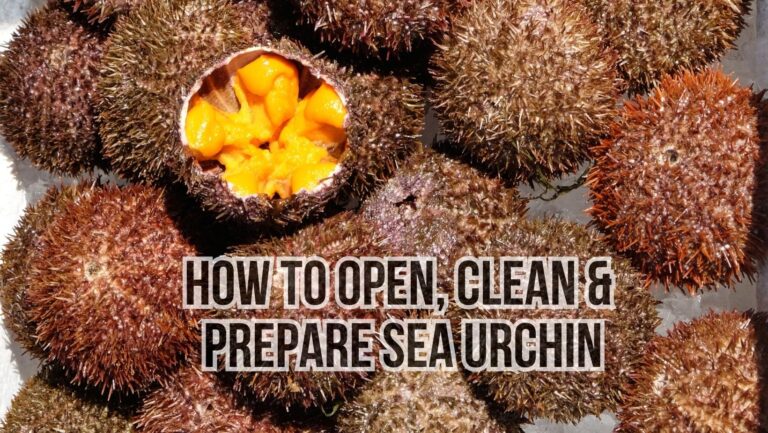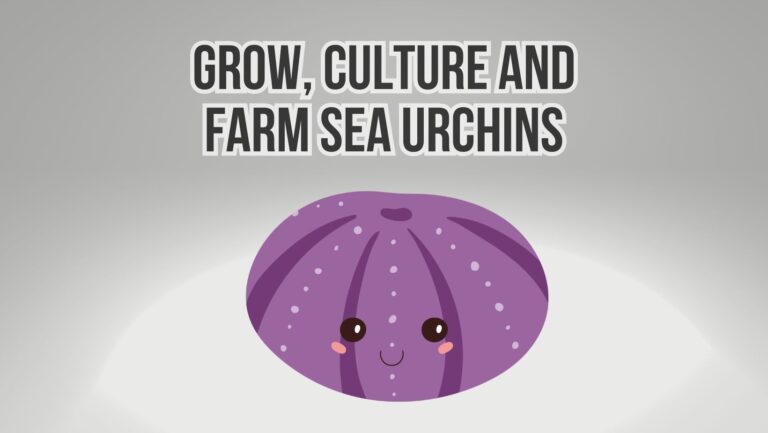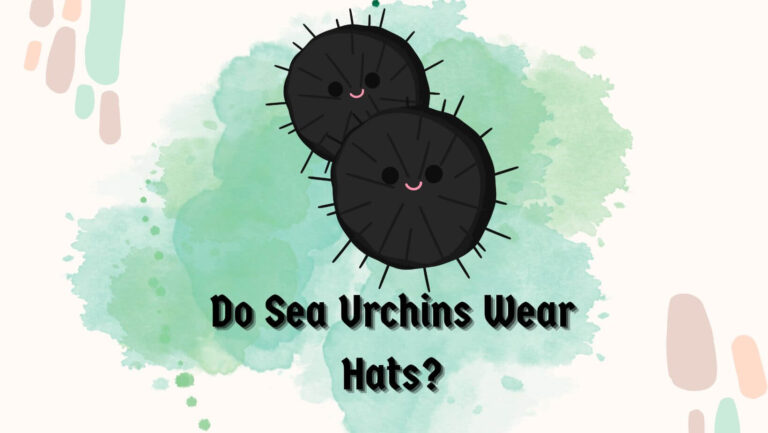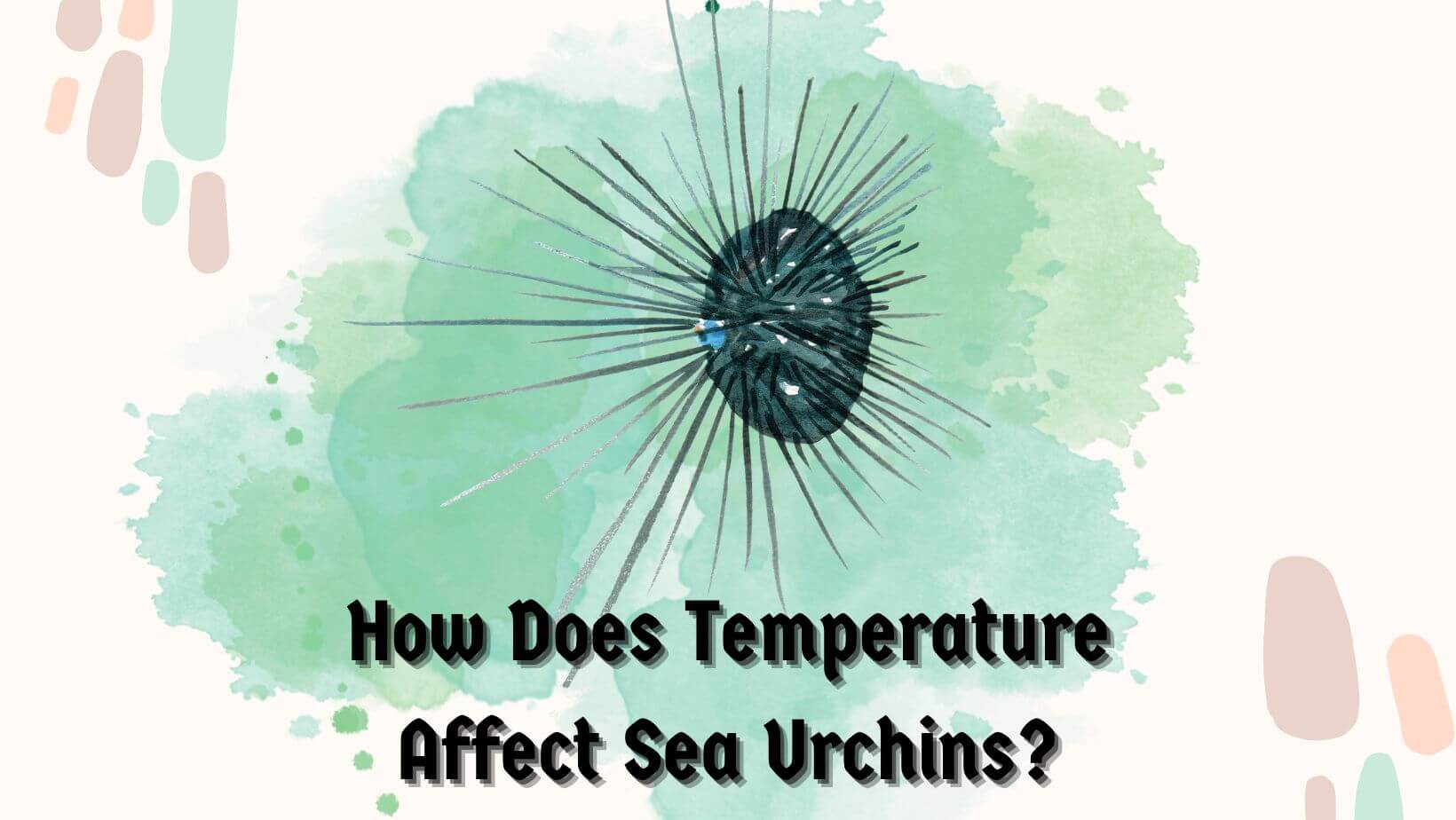
No doubt, temperature also has an important role in marine ecosystems. Therefore, if you are wondering ‘How Does Temperature Affect Sea Urchins?’, this article is for you. Not only are sea urchins intriguing creatures, but they’ve also captured the curiosity of scientists and beachgoers alike.
Today, I’ll help you learn the impact of temperature on sea urchins as well as help in exploring their physiological & ecological responses to different thermal conditions.
Table of Contents
How Does Temperature Affect Sea Urchins?

Temperature can significantly affect sea urchins’ survival & development. Sea urchins experience an increase in their metabolic rates & growth rates. For example, extreme temperatures, like heat waves or cold snaps, can push sea urchins beyond their thermal comfort zone.
Also, warmer temperatures can accelerate larval growth. Temperature gradients act as natural barriers, shaping the limits of species ranges.
However, you should know that sea urchins are captivating in appearance and their ability to adapt to various temperature ranges. Researchers have found that different species of sea urchins have their ideal temperature ranges within which they thrive.
If you visit cooler waters, you’ll find purple sea urchins (Strongylocentrotus purpuratus), whereas green sea urchins (Strongylocentrotus droebachiensis) are abundant in slightly warmer temperatures.
Well, it’s not surprising that species have evolved to inhabit specific thermal niches because many other marine species have evolved the same way, which further helps them to optimize their physiological functions.
However, it doesn’t mean that sea urchins can thrive in any water temperature because they also have their limits regarding temperature. Their survival & development can be significantly affected beyond these limits.
It has been found that extreme temperature events like heat waves or cold snaps can push sea urchins beyond their thermal comfort zone, which further leads to physiological stress & even mortality.
Therefore, I’m sharing three ways ‘How does temperature affect sea urchins?’ Understanding the impact of temperature extremes on sea urchins is important, as these events can disrupt the delicate balance within their populations.
7 Major Impacts & Influences

Metabolic Responses
You should know that sea urchins’ metabolic rates depend highly on their environmental temperature. And it’s something that we need to know because fluctuations in metabolic rates due to temperature changes can impact sea urchins’ life functions, such as growth, reproduction, and survival. Sea urchins exposed to higher temperatures often experience an increase in their metabolic rates, which can affect their energy expenditure and overall physiological functioning.
Larval Survival
Temperature also plays a crucial role during sea urchins’ early life stages. You should also note that temperature influences larval sea urchins’ survival greatly. The optimal/ideal temperature range for developing sea urchins also varies among species. If you study red sea urchins (Mesocentrotus Franciscans), you’ll find that their larvae can only thrive in cooler waters with temperatures ranging from 8 to 15°.
Trophic interactions
The temperature can also affect the traffic interaction within marine ecosystems on searchings. It has been noticed that temperatures mediate changes in sea urchins’ foraging behavior, affecting their overall feeding rates and food preferences.
We know that sea urchins are voracious grangers, and their interaction with other organisms like algae & kelp is crucial and plays an important role in maintaining marine ecosystem balance.
Therefore, changes in the sea urchin population due to any temperature fluctuation will disrupt these kinds of trophic introductions, further leading to altered community structures and ecosystem functions.
Growth Rates
When our little friends are in their larval stage, their growth rate & attainment can greatly be affected by temperature. It has been found that warmer temperatures further lead to larval growth acceleration causing earlier achievement of development stages.
On the other hand, lower temperature always slows the growth of sea urchin’s laval and prolongs the period. Indeed, these temperature-mediated effects on larval development can affect population dynamics. All in all, temperature-mediated effects affect the availability of juveniles for settlement & subsequent reproduction.
You May Also Like Reading
Larvae Settlement Behaviours
Larvae must transition from free-floating larvae to settled benthic individuals. However, the temperature can also influence larval settlement & metamorphosis. While doing my research, I found that sea urchins’ ability to detect suitable substrates for attachment can be greatly influenced by temperature.
Deviation from optimal temperature can also result in the development of abnormalities & increment in mortality rates during settlement and metamorphosis. No doubt, temperatures vastly influence the settlement behavior of sea urchin larvae.
You should know that this early-life temperature impact can also have long-term consequences for the adult sea urchin population, affecting their overall abundance and distribution.
Distribution Pattern
If you notice closely, you will also note a significant influence of temperature on the distribution pattern of sea urchin species. Different types of species have already exhibited references for specific temperature ranges, which can contribute to overall distinct distribution patterns along temperature gradients.
Indeed, temperature radiant is also a natural barrier in the Marine Ecosystem, which shapes the limits of species ranges. Also, sharp transitions or extreme temperatures can create thermal barriers that disrupt certain species’ distribution. Any temperature change in the temperature regimes induced by climatic changes may also alter the distribution of a pattern of sea urchins.
Population
Studies have also shown that higher temperatures have significantly impacted the sea urchin population by reducing the reproductive output and larval survival rate. In addition, ocean acidification caused by increased carbon dioxide levels also affects our little friends’ ability to build & maintain their calcium carbonate shells. You should know that these anthropogenic climate changes also significantly threaten their physiological development and survival rate.
What To Do?
We must take steps toward managing climatic change to mitigate the impact on sea urchins. We should work toward conservation strategies & management approaches. We must protect their critical habitats and implement sustainable fishing practices.
We should also promote awareness about the importance of the marine ecosystem, which is always an essential step. We must focus on preserving their habitats and supporting their reproductive success.
In addition to this, sea urchins are also known to hold economic importance in various industries. Many Aquaculture and fisheries rely on sea urchins for their commercial value, particularly their roe.
Sea urchins are sought after for their roe and are particularly used in culinary dishes around the World. Therefore, temperature-related disturbance can further disrupt the availability & quality of the sea urchin population, impacting these industries as well. Therefore we must ensure the long-term viability of sea urchin fisheries & aqua cultural operations through sustainable practices, monitoring systems, and regulations.
- More Helpful Tips
- What’s Inside a Sea Urchin?
- Do Sea Urchins Harm Coral?
- How to Tell if a Sea Urchin is Dead
Conclusion
After reading this article, you know that temperature plays a crucial role in shaping the physiology, development, & ecological interaction of sea urchins. Therefore, we must understand this kind of temperature effect on these fascinating marine creatures for proper conservation & ecosystem management efforts.
Undoubtedly, thorough, comprehensive Research & dedication is required to protect their habitats, contributing to the overall preservation of the sea urchin population for future generations.
It will also ensure the resilience of our Marine ecosystems in the face of climate change. We must value these unique creatures and the vital role that they play. If you find this article helpful, then make sure to share it.
Your share will not only help people learn ‘how temperature affects sea urchins’ but also why they should take a step towards safeguarding the health & balance of our oceans. If you find this article fun to read, consider reading our other articles. See you in the next post, till then, take care & goodbye.

